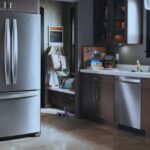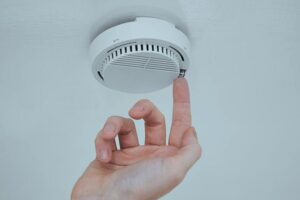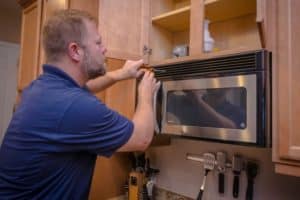Most refrigerators are not that cheap. It is why we would try to have it fixed as much as possible whenever it breaks down. However, should you throw in the towel right away if the fridge compressor is running but not cooling? Or is there still hope?
There is still a bit of hope that you can cling to when your fridge is not working. For instance, clogged coils can cause the fridge’s cooling capabilities to the tank. You can also check if the condenser fan is spinning freely and not jammed up. If your fridge has coils running at the back, then it won’t have a fan.
Read on to learn more about why your fridge compressor is running but not cooling.
Reasons for Fridge Compressor Is Running But Not Cooling

Before breaking out your toolbox or calling a technician, confirm the problem in your refrigerator first. Find out whether there is indeed anything wrong with your refrigerator.
Here are some easy fixes that you should try first before heading over to the next step. These fixes might help save you from an embarrassing conversation with the repairman. You don’t also have to pay any unnecessary service fees.
Unplugged Fridge
You’d be surprised at the number of people who thought their fridge was broken only to be informed by a technician later that it was just unplugged. Save yourself from this kind of embarrassment. If the fridge light is not turning on when you open the door, check if you plugged it correctly.
Thermostat Is Set Too Low
This might seem like a tiny problem, but the thermostat may be set too low. Maybe someone in your household set the fridge’s thermostat low. It is the reason why the fridge compressor is running but not cooling.
Find the thermostat of your fridge and set it to the correct temperature. If your fridge doesn’t have digital controls, consult the manual to determine which setting will provide the right temperature.
Door Isn’t Closing Properly or the Gasket Is Damaged
Check if either the door magnets no longer work properly or a tear in the door’s rubber gasket. If the door magnets are no longer working as intended, the door will not stay closed even if pushed shut. In that case, you’ll need to have the magnets replaced.
Meanwhile, if you find a tear on the rubber door gasket, it may cause warm air to leak into the fridge. It can also prevent the inside from reaching the desired temperature. If that’s the case, rip out the old gasket and replace it. See if this fixes the problem.
Poor Air Circulation
Check if food containers are blocking the fan vents. Obstructions will prevent proper airflow inside the fridge. They may cause some parts to get extremely cold while others are not getting cold at all. Organize the contents of your fridge. This time, keep large containers away from the air vents so that there’s proper circulation.
If you’ve run through all possible culprits, but your fridge still doesn’t work, there may be a more complicated problem. It could be a sign that you may need the help of a professional.
Common Fridge Problems and How to Fix Them

There are times when a refrigerator’s problems are not as simple as accidentally unplugging it. Plenty of different things might have gone wrong that caused your fridge to stop doing its job. It can be tricky to replace malfunctioning parts, and finding the said parts is even trickier.
If you want to try your hand at fixing the problem, this list of the common fridge problems might help. They also come with their potential solutions:
1. Faulty Compressor
As the name suggests, the compressor is the part that compresses the coolant/refrigerant vapor through the evaporator coils. The pressure produced by the gases going through the coils creates heat. However, it will also cool down quickly, which helps it absorb any heat inside the fridge.
If your fridge still lights up when opening the door, but you don’t hear the compressor running, it might be faulty. It could also be that the compressor’s start relay is broken.
Location
The compressor is usually behind the fridge at the bottom. It is typically black and looks like a round tank. The compressor start relay is the part that connects all sorts of wires to it. To gain access to these parts, move your fridge away from the wall. Unscrew the back panel, too. Make sure to unplug the fridge before doing anything.
How to Fix a Faulty Compressor
Start by replacing the compressor start relay. It is easier to install and is quite affordable:
- Just pull the relay off its connectors. Take note of which plugs you pulled and from where you pulled them from,
- Replacing the compressor itself is a bit more difficult and labor-intensive. You will need to disconnect it from the suction and discharge lines, disconnect it from the electrical relay, and
- Solder the lines to keep them in place,
In short, this is not a job that a typical homeowner can do. For the sake of your refrigerator and your well-being, get the help of a professional technician.
2. Clogged or Broken Condenser Coils
The condenser coils refer to the parts carrying the hot gas produced by the compressor towards the evaporator coils. As the coolant passes through the coils, the gas cools down and turns back into liquid form. If there is a condenser coil blockage, it won’t travel quite as fast as it needs to. It can prevent it from cooling inside the fridge.
Location
The condenser coils are typically found at the back of the fridge along the bottom near the compressor. The coil leads from the compressor towards the freezer.
How to Fix a Clogged or Broken Condenser Coils
If you suspect that there is a blockage in the condenser coil, they will need a thorough cleaning:
- Unplug the refrigerator and wait fifteen minutes to let the coils cool down,
- Pull the fridge away from the wall and open the rear panel to gain access to the condenser coil,
- Remove the toe grille after that. In most cases, you can pull the toe grill out straight. However, just to be sure, check your owner’s manual if there are additional steps needed,
- Using a coil brush, clean inside the condenser coils. Remove as much of the dirt and debris as you can,
- After that, vacuum the dirt off the floor afterward. Once you think you’ve cleaned it enough, return the coil to its original position, and
- Test if this fixed the problem.
3. Faulty Condenser Fan
The condenser fan keeps the compressor and the condenser coils from overheating. This fan should automatically run when the compressor turns on. However, if it doesn’t, the compressor might shut off due to its overheating protection mechanism.
Location
The condenser fan is located beside the compressor and condenser coils. However, if you have an old model refrigerator with the condenser coils running down the back of the appliance, it will not have a condenser fan.
How to Fix a Faulty Condenser Fan
First, make sure that the fan can spin freely and not jammed up or obstructed:
- Unplug the fridge, pull it away from the wall, and remove the back panel,
- Once you locate the condenser fan, try to spin the blades with your hand,
- With the back panel still removed, plug the fridge back in and see if the fan turns on. If it doesn’t, the fan motor is already busted and you need to replace the entire thing,
- Unlike the compressor, removing the condenser fan is much easier,
- Unplug the fridge from the wall socket and open the back panel,
- Hold the fan in place and then unfasten the screws on the mounting bracket,
- Carefully cut the wires. Do this at uneven lengths for safety, and
- Using wire connectors, connect the wires of the replacement fan motor using wire clips. Place it where the old fan used to be.
4. Faulty Evaporator Fan
The evaporator fan is the one that circulates the air inside the refrigerator. This fan pulls air over the evaporator coil and cools it in the process. It will then push the cold air inside the refrigerator. If the evaporator is not working as it should, it won’t produce cold air.
Location
You will find the evaporator fan behind the freezer. To access it, you will need to empty the freezer.
How to Fix a Faulty Evaporator Fan
If the fan isn’t working, you might need to replace it:
- Remove the panel that covers the evaporator,
- Locate the fan and remove it by undoing the mounting clip,
- Take off the fan blade and pull out the wiring harness,
- Install the new fan motor in the old one’s former position,
- Do the previous steps mentioned but in reverse. Before you replace the panel, test the new motor first by plugging in the fridge, and
- Check if the fan is working properly.
5. Faulty Air Damper
This part controls how much cold air goes from the freezer to the fridge. If the damper doesn’t open, the fridge won’t get cold.
Location
You can typically find the air damper in the wall between the freezer and the fridge compartment. If you have a side-by-side freezer, it should be in the upper-left corner.
How to Fix a Faulty Air Damper
These are instructions on how to replace the damper in a side-by-side fridge. However, the process should be similar for other refrigerators. The only difference might be the location of the components:
- Unplug the fridge,
- Remove the air damper by unscrewing the cover that holds it in place,
- Pull the entire thing out. The thermostat sensor should be on the damper housing. A plastic clip typically has it in place and is easy to remove if needed,
- If there’s an ice maker, remove the motor by unscrewing the base and detaching the wiring harness,
- Remove the rear duct panel and then push down the plastic tab holding the air damper in place, and
- Pull out the old damper and replace it with the new one. Replace all the components you removed, and your fridge should be good to go.
Again, what are the common causes of a fridge compressor that is running but not cooling? If the fridge’s cooling capabilities are affected, check whether your fridge’s coils are clogged or whether the condenser fan is properly spinning or not.
Frigidaire Refrigerator Not Cooling but the Freezer Is Fine
Call the Pros When Your Fridge Still Won’t Work

The problems mentioned above are only the most common ones that your fridge might encounter. However, other problems might arise that are not as easy to diagnose. If you’ve tried the basic troubleshooting steps and you still cannot make your fridge work, it’s about time to call the professionals.
Now, there are times when it will be more cost-effective just to let go and get a new refrigerator. Most refrigerator technicians provide free check-ups and estimates. The repair costs provided by your tech may seem too expensive. If the bill is almost half the fridge’s price, it might be better just to let it go. It would be much better to shop for a new fridge.
Conclusion – Fridge Compressor Is Running but Not Cooling
If your fridge is not working properly, that does not necessarily mean you should buy a new one. There is still a chance you can salvage it and make it work for a couple more years. For instance, the problem might be with the condenser fan, which you can easily replace.
There are times when the problems of your fridge are easy to fix. However, in some cases, you need to get help from a professional technician. If the tech says it would be better to junk the unit, take his word for it. Unless the fridge has a lot of sentimental value, if the repair costs are too high, you should replace it altogether.
Related reading:
Refrigerator Leaking Water – How to Fix


![Freezer Not Working but Fridge Is [Causes and How to Fix] freezer not working but fridge is](https://homecarezen.com/wp-content/uploads/2021/06/freezer-not-working-but-fridge-is-150x150.jpg)




